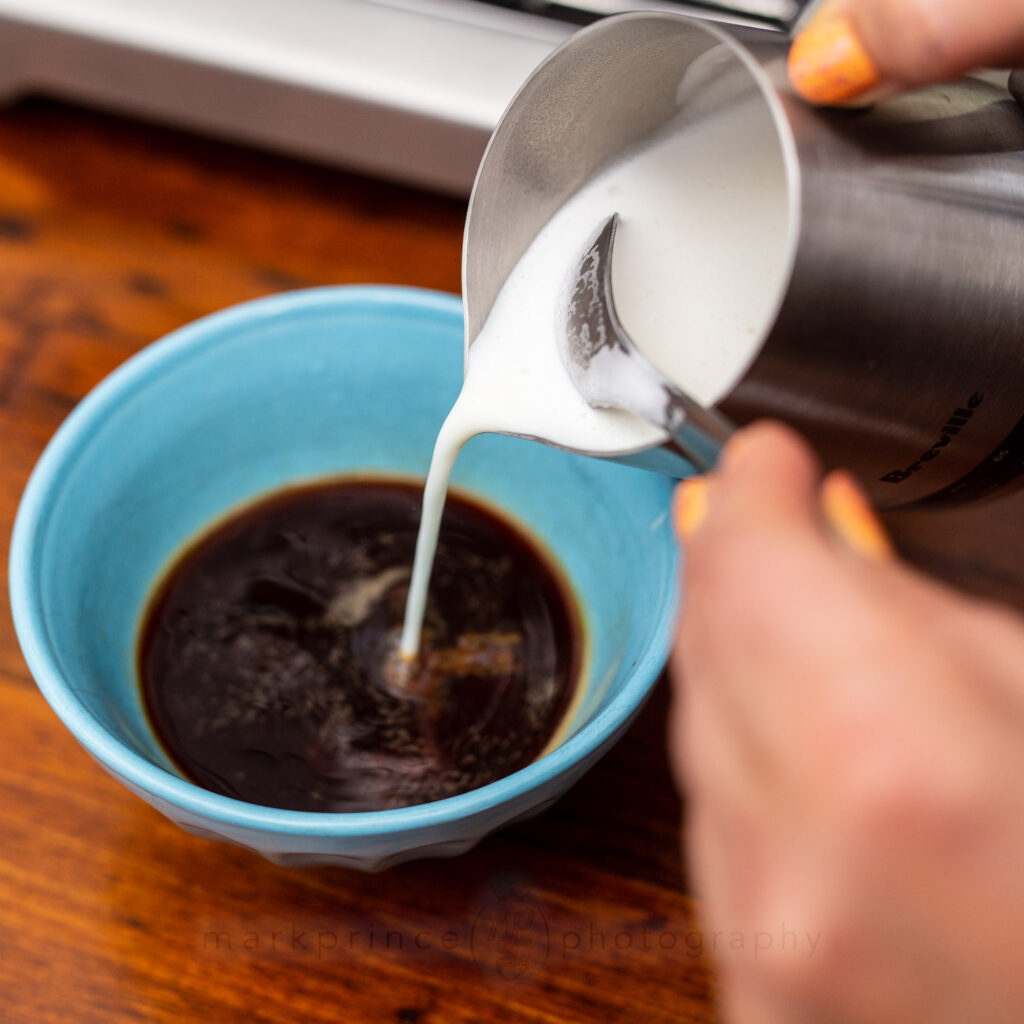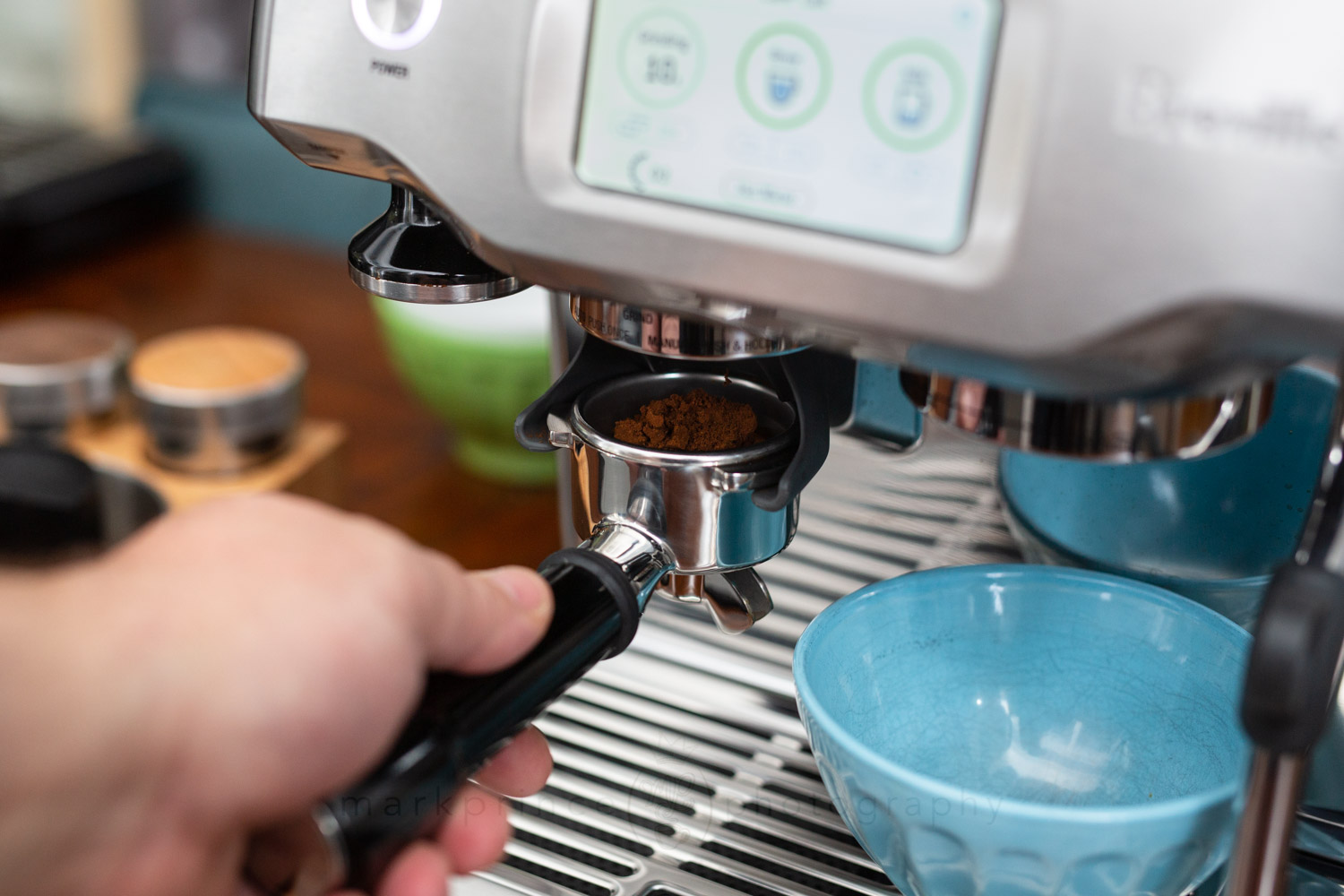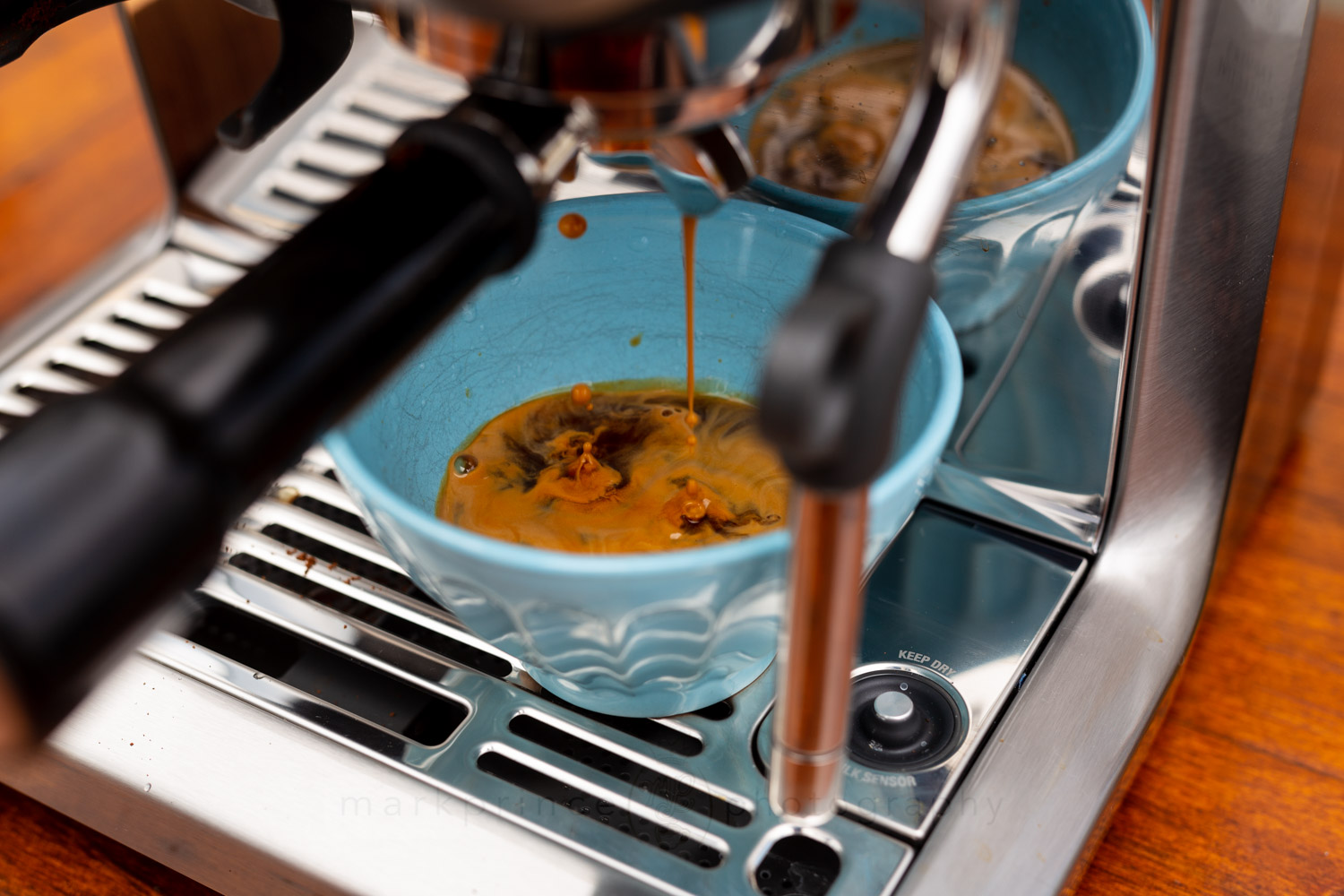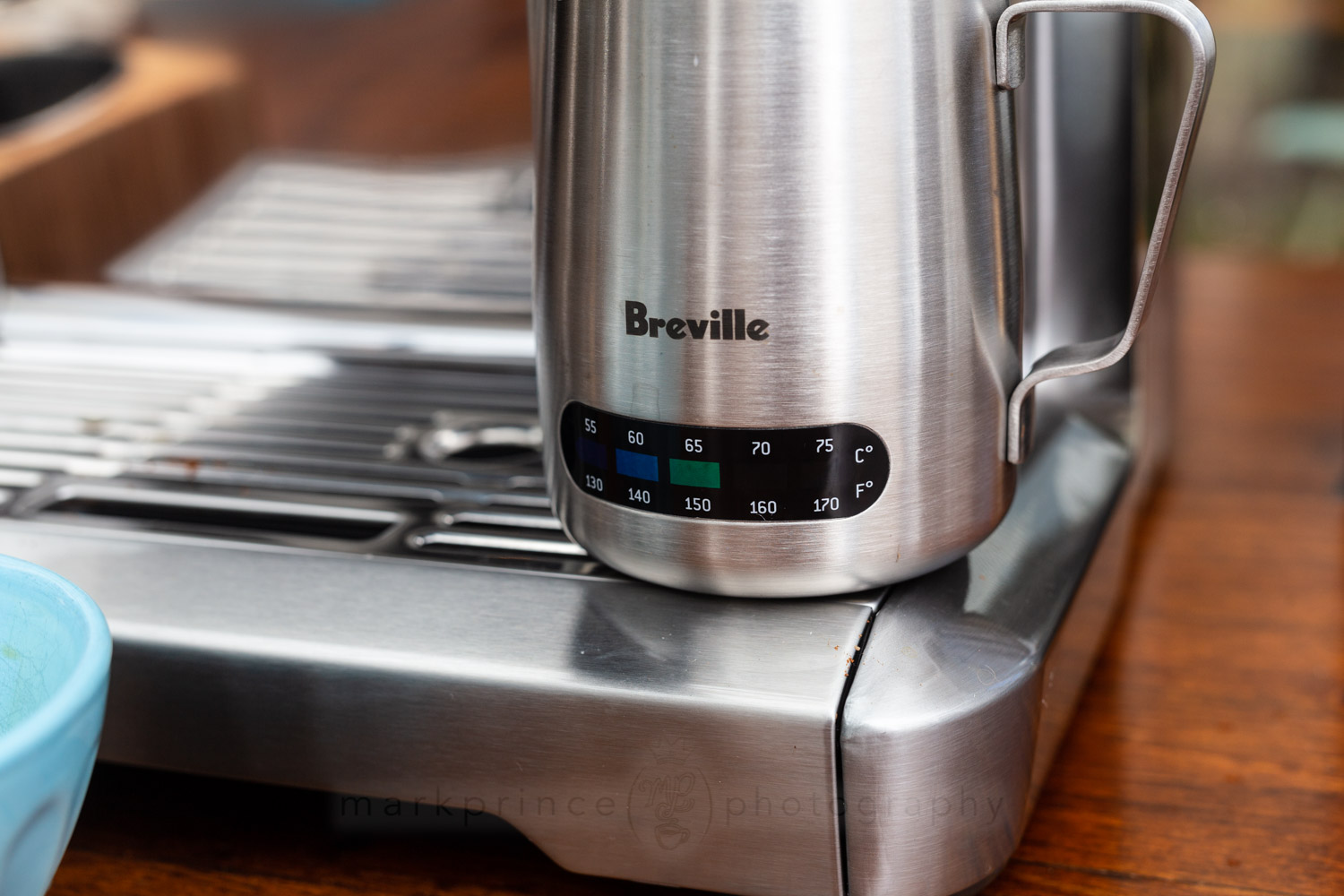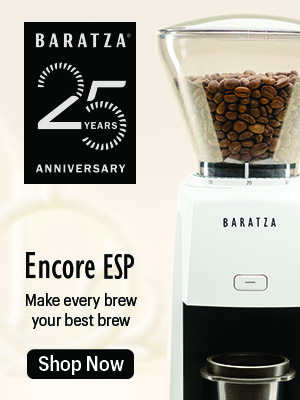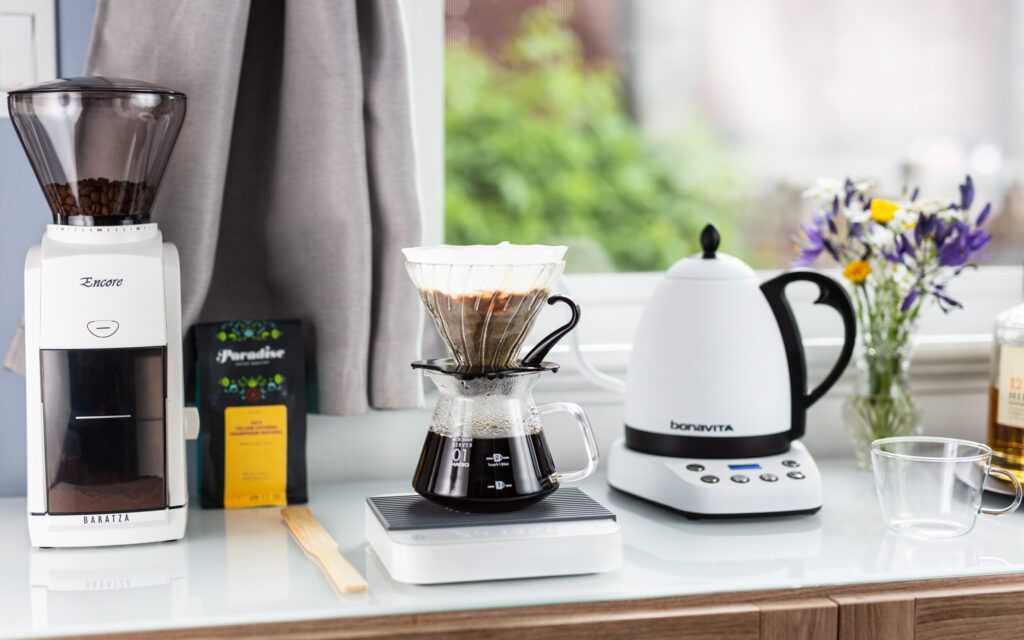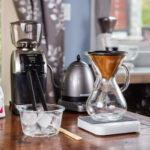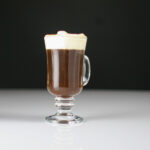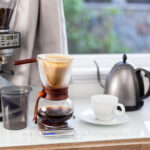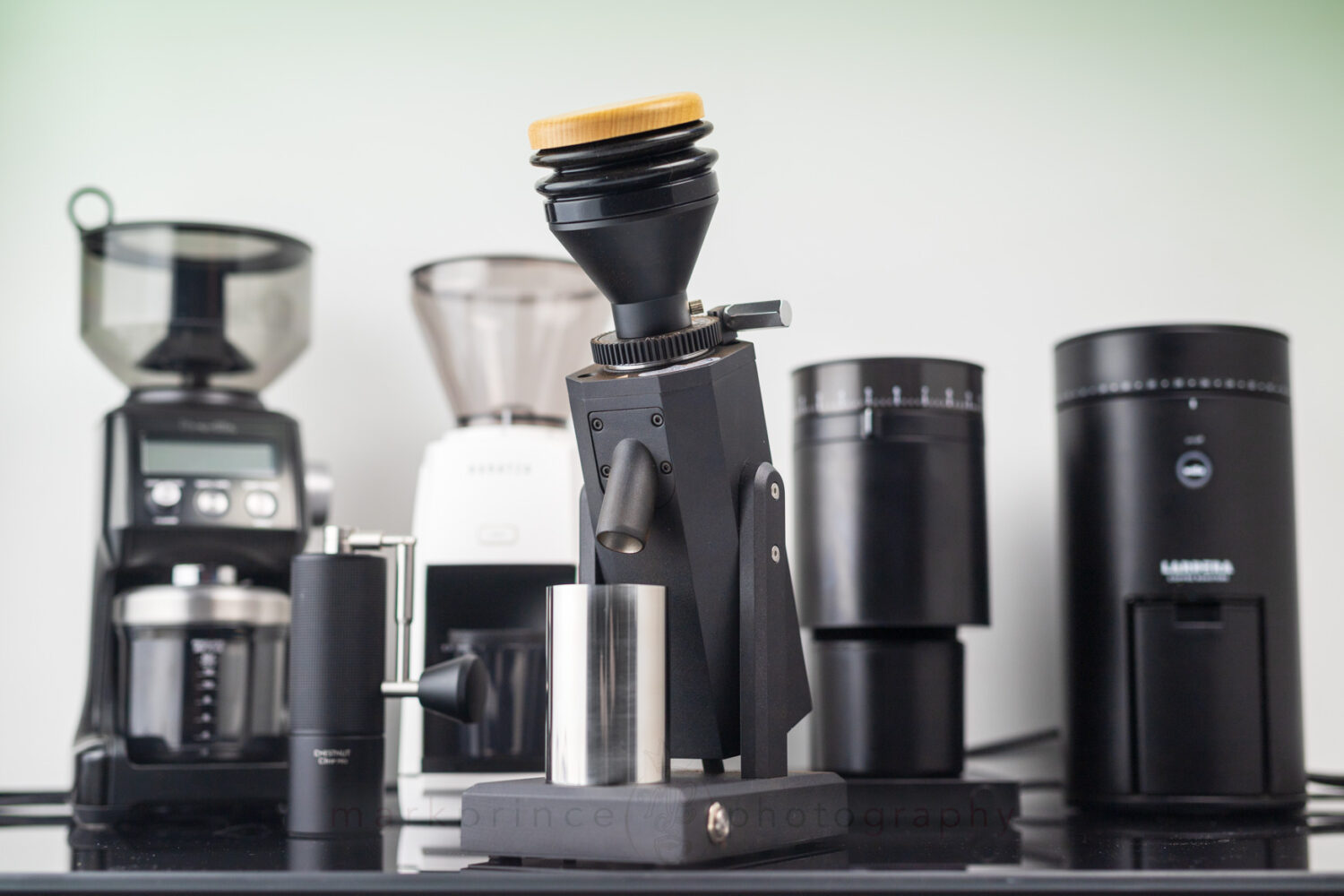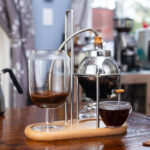The Cafe au Lait, Step by Step
The most traditional way to make a café au lait is with a moka pot and milk heated in a soup pan on the stovetop. We’re going the espresso machine route for both convenience and a much better tasting beverage.
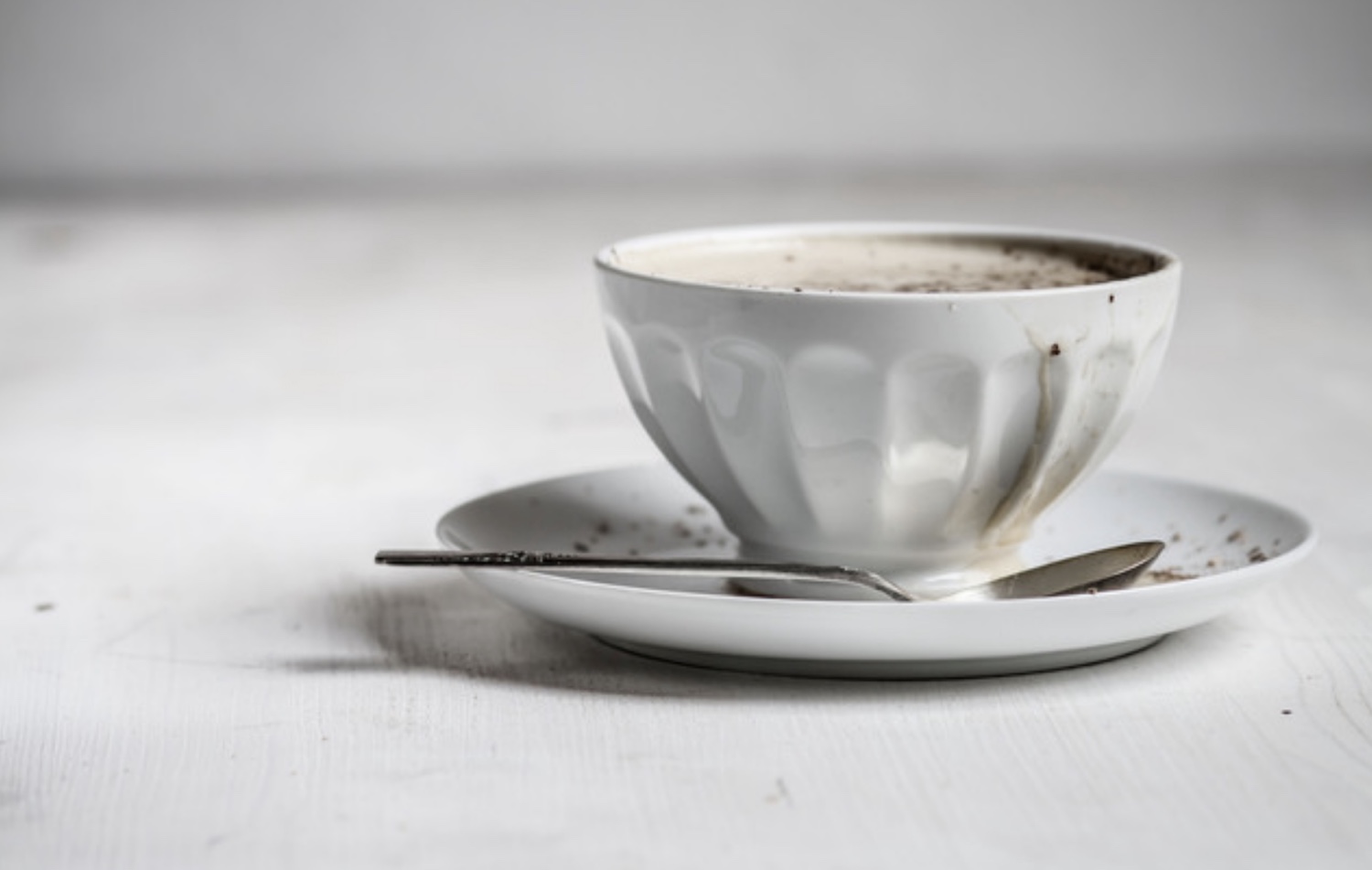
Time Needed: 5 minutes
Equipment Cost $ 440
Necessary Supplies
Necessary Tools
Cafè au Lait Steps
Prepare Everything Needed
The cafe au lait is served in a, ironically enough, “cafe au lait” style bowl, like the one in this photo. It’s a ceramic bowl with scalloped sides. You can get these almost anywhere, in sizes holding as little as 150ml, and as much as 500ml or larger. We’re using a 300ml bowl. No need to pre-heat, as this beverage is pretty hot. We also have our milk ready to go and a steam pitcher.
Prepare Portafilter
Because of the volume of our bowl (300ml), we’re going to be brewing a full double shot of espresso. With the Breville Barista Touch, we’re dosing 18g in the portafilter and preparing it just like any normal espresso shot pull.
Add Hot Water to Bowl
Add about 50ml of hot water to the bowl, or about the same volume that you’ll be brewing for espresso.
Brew the Double Shot
Brew your espresso right into the hot water, in your cafe au lait bowl. We’re aiming for 45-50ml brewed, giving us just under 100ml of liquid (including your hot water) in the bowl once the shot is done.
Stir the Brew
Once your shot is done, stir it up to thoroughly mix it with the hot water. Our goal is also to reduce the crema produced.
Steam the Milk
We’re steaming about 150-175ml of milk (using whole milk here), and trying to create as little froth as possible. With the Barista Touch, the entire steaming and frothing (or lack thereof) process is automated (and works quite well); if you’re manually steaming, make sure the steam wand is completely submerged from the get go.
Steam to 65C (150F)
Again, thanks to the robotic like brainiac the Barista Touch is, I set it to 65C, and no froth, and the machine took care of the rest. With a more traditional wand, if you don’t have a thermometer handy, steam until you can’t comfortably wrap your hand around the pitcher, then steam for a few seconds longer; that’s around 145-150F (62-65C). Or you could get the cool temperature indicator pitcher from Breville that we’re using.
Wipe the Wand
It’s always important to get into the good practice of wiping your steam wand immediately after use.
Pour Steamed Milk, using Spoon
Once your milk is up to temperature, pour about 125-150ml into your bowl, using a spoon to restrict any foam that may have been created; this drink is all hot milk and hot coffee, no foam added.
Cafè au LaitHistory and Etymology
The cafe au lait is an old drink. It dates back to the 18th century in France, and a variant of it dates back to the 17th century in Austria. It’s been around almost as long as Europeans have drunk coffee. There’s even ads for the beverage dating back to the 1850s.
It’s been made with every kind of brewing apparatus invented for coffee, from siphon coffee makers, to press pots, from hydrostatic pressure brewers, to steam driven espresso machines. Coffee with milk (which is the literal translation for cafe au lait) was so much in demand that some of the earliest espresso machines invented included a steam wand for heating up milk quickly (the first Pavoni / Bezerra machine didn’t have one, but the second and third generations, a few years later, did).
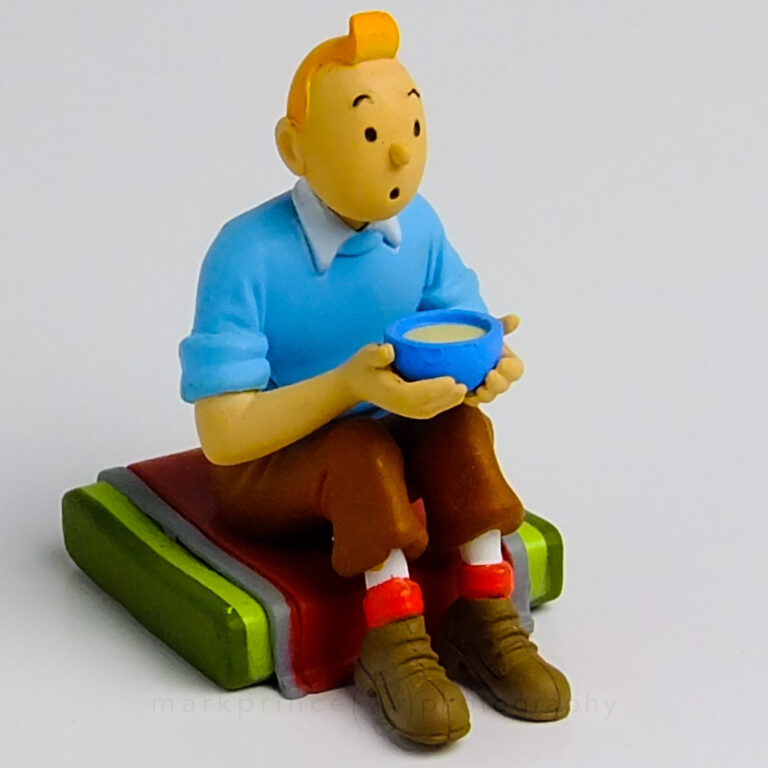
Tintin and his Cafe au Lait
It is the breakfast drink for millions of Europeans in their home. Where North Americans have their instant coffee, percolated coffee, or auto drip coffee in the morning with a bit of milk and sugar, Europeans across the continent have a mixture of hot coffee and hot milk (no sugar). It’s so prevalent, that Tintin even drank one while sitting on a suitcase once (reference the photo to the right)
I should note it’s common to use a very dark roast when building this drink, at least in France and other parts of Europe. The heated milk softens things up quite a bit, but I do recall the roasty, dark roast nose cutting through on every cafe au lait I’ve had in France. At CoffeeGeek, we believe excessively dark roasts hide what specialty coffee is capable of, so we just choose a “darker” roast compared to our usual espresso choices, when building this drink, but a roast that still highlights the green coffee’s flavour potential, not just “roast notes”.
Because there’s been so much historical variance on how the drink has been assembled, I focused on my own youthful memories of this drink: served in a youth hostel, milk heated on the stove, coffee brewed in a large moka pot (they had several of them going at one time), mixed with a bit of hot water and milk to a 1.5:1 ratio to coffee. I still make my cafe au lait in this ratio to this day, but found ways to make it a lot more tasty, a lot quicker, and with less mess to clean up.
Making what is in effect a 1:1 ratio americano as your base mimics the coffee coming out of a moka pot, and keeps the caffeine hit from this drink to a minimum. Of course, you can just pull a quad shot (2 double shots) as your base, and build the cafe au lait using 90-100ml of full strength espresso. I build it that way sometimes, when I want a bit more coffee notes from the beverage, and a bit less milky notes.
I recommend heating your milk to 65C (150F) because again, that sort of mimics the cafe au lait milk temperatures I recall from my youthful travels, but then again, not entirely: that youth hostel cafe au lait had milk that bordered on scalding (you can tell from the burning whey smell you get from over heated milk), which is about 70-75C (165-170F). Milk goes through rather drastic chemical changes at that temperature, and not for the better. 65F is a much nicer zone for milk used in this drink. Go even cooler if you like, down to 55 or 60C.
As you can see, there’s a lot of play you can get from building this beverage. Perhaps the only constant truly is the vessel it’s served in: it’s always a bowl, and it is so popular, that a specific style of bowl is named after the drink: the cafe au lait bowl, with the scalloped sides.
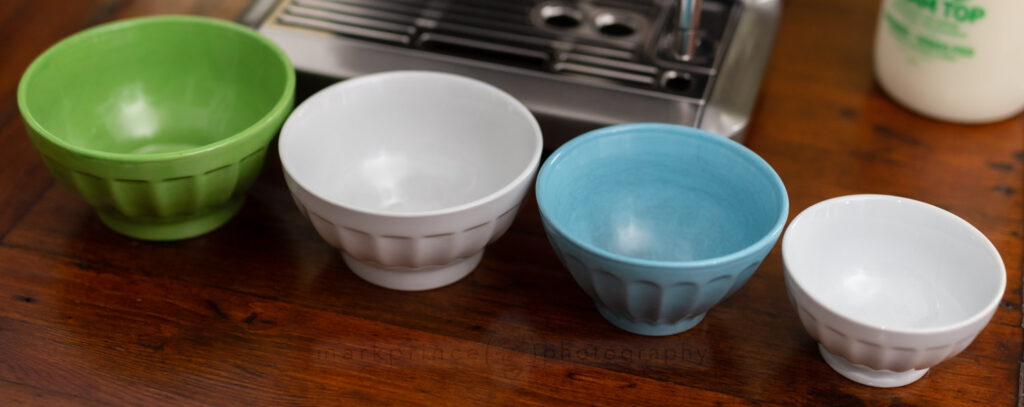
Range of Bowl Sizes
As for the ways to make a cafe au lait, there’s almost infinite possibilities. You can use a press pot to brew the coffee, or a moka pot, or a siphon brewer. You can use double the amount of coffee you’d normally use in your siphon, to do an extra strong brew. You can heat the milk on the stove, indeed go up to scalding (to mimic the Euro way), or as low as 45-50C if you like. You can use straight espresso, diluted espresso, or even build your coffee drink using our lungo method, or our cafe creme method.
You can even choose to add steamed milk to the bowl first, then brew your double espresso shots right onto that milk, for a different “look” to the overall beverage and a different taste, too, because of how the crema interacts with the milk on top of the beverage, like here:
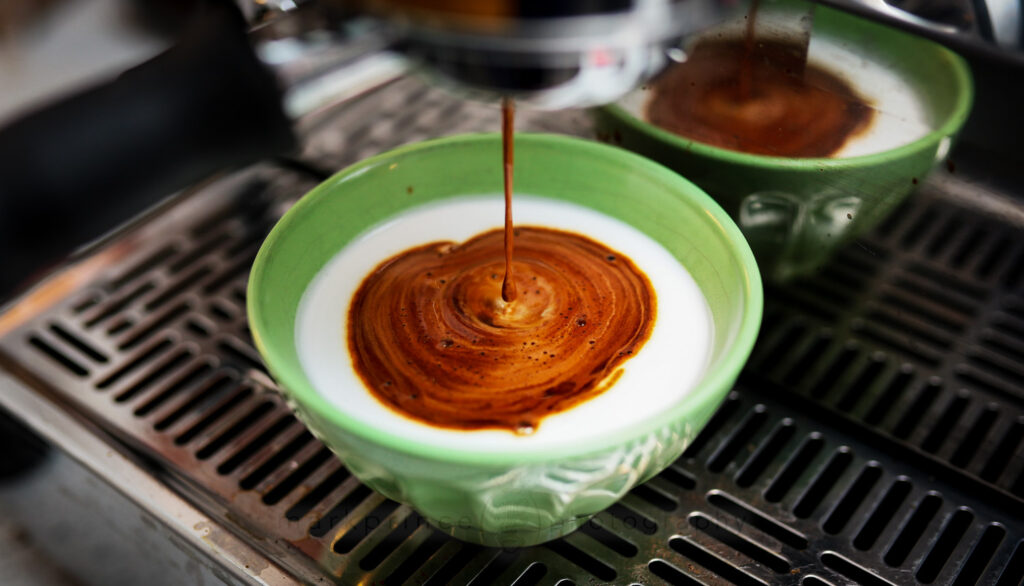
Alternate Way to Make a Cafe au Lait

Support CoffeeGeek
If you enjoy and learn from this resource, please consider making a one time or recurring donation to help support our work and fund purchases for future reviews.


